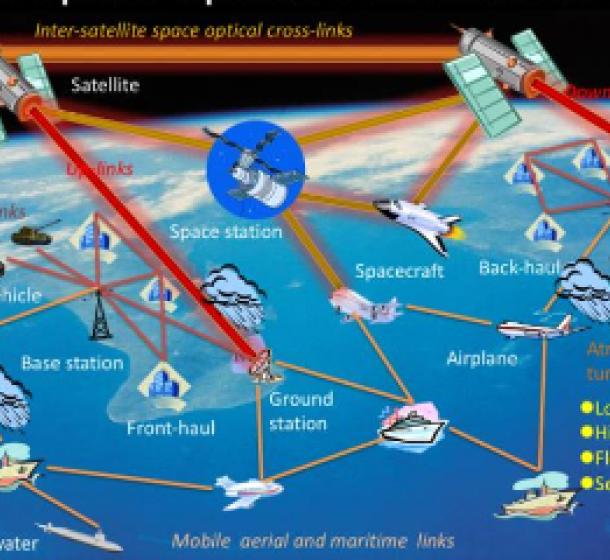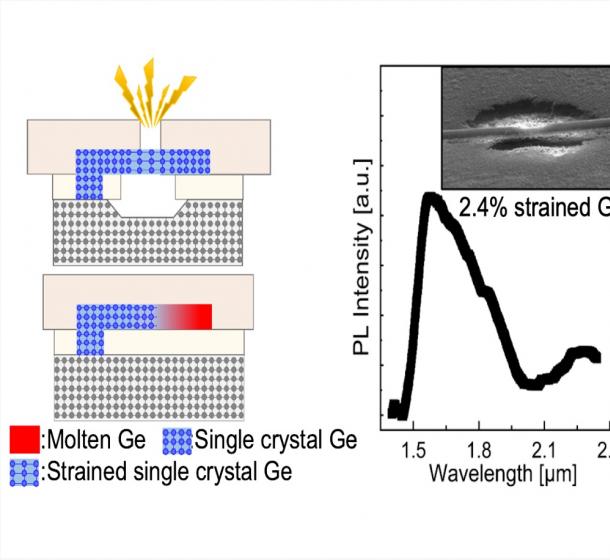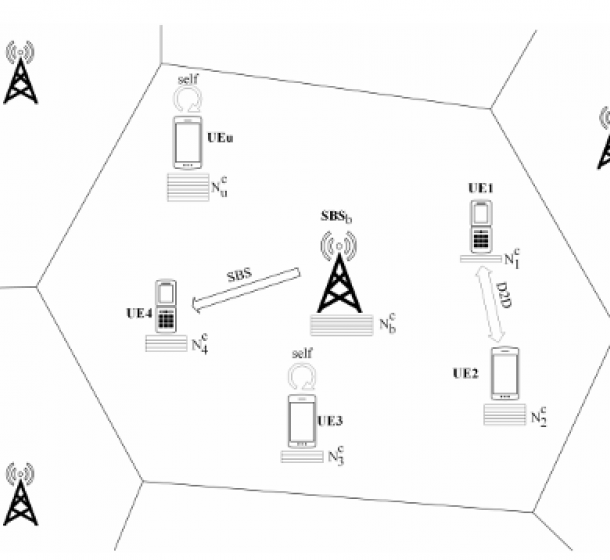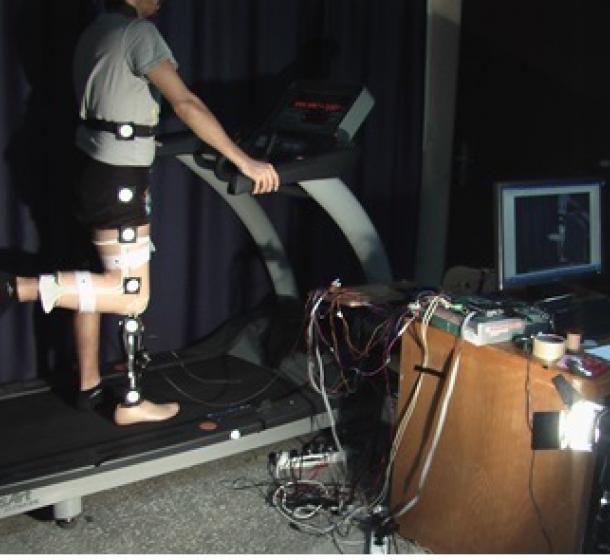The main research areas of the Department of Electrical and Electronics Engineering at TED University are; wireless communications, beyond 5G communication techniques, machine learning, terrestrial and underwater wireless networks, internet of things, radar & antenna systems, photonic crystals, nanofabrication techniques, optical communication, robotic control systems, biomechatronics, swarm systems, and game theory. The table below shows the active research interests of our faculty members.
| FACULTY MEMBER | ACTIVE RESEARCH TOPICS |
|---|---|
| Prof. Ali Nezih Guven | Energy, Analysis of Power Systems, Power Transmission and Distribution, Protection Systems, Renewable Energy. |
| Asst. Prof. Aykut Yildiz | Robotic Systems, Swarm Theory, Game Theory, Control Systems, Autonomous Vehicles, Opinion Dynamics, Radar Signal Processing. |
| Asst. Prof. Cicek Boztug Yerci | Nanoelectronics, Nanofabrication, Photonics, Semiconductor Based Optoelectronic Devices, Silicon Photonics, CMOS Compatible Infrared Light Sources. |
| Prof. Erdem Yazgan | HF Propagation, Low Altitude Radar Systems, Mobile Communications, MIC’s, Reflector and Microstrip Antennas, Gaussian Beam Solutions, Conformal Mapping, Satellite Communication, Medical Electronics. |
| Assoc. Prof. Javad Haghighat | Wireless Communications, Information Theory and Coding, Digital Signal Processing, Multiple Access Schemes, Reconfigurable Intelligent Surfaces, Simultaneous Wireless Information and Power Transfer, Machine learning for Wireless Communications, DNA Storage Systems. |
| Assoc. Prof. Huseyin Ugur Yildiz | Wireless Communications and Networks, Wireless Sensor Networks, Underwater Acoustic Sensor Networks, Internet of Things, Smart Grids, Optimization. |
| Asst. Prof. Kurtulus Erinc Akdogan | Signal Processing, Biomedical, Biomechatronics, Embedded Systems. |
| Assoc. Prof. Muhsin Caner Gokce | Free-Space Optical Communication, Optical Wireless Communication, Laser Beam Propagation, Channel Modelling, Optical Modulation, Optical Turbulence. |
| Asst. Prof. Serkan Sahin | Laser Communications and LIDAR Systems, Beam Propagation in Atmospheric Turbulence and in Free Space, Scattering of Light Beams, Optics. |

Opinion Networks in Social Networks
Today the Internet provides information, communication, social life, entertainment, shopping, health, and business for its users. Hence, it is utilized by 60% of the world's population thanks to the technological experience fostered by internet. Especially, social media applications are increasingly leveraged by several people all around the world. Social networks which transform the human involvement in terms of technology constitute part of human everyday life. One of the problems in such an important topic is the detection of the malicious users also known as trolls.
The main contribution of the conducted project designated below is the automated detection of trolls and their dismissal from the social network. Mathematical analysis based on the Nash equilibrium is a promising approach to detecting trolls in social media. In this framework, the users are communicating in a local network and their opinions are evolving as well. Such an approach is considered as a milestone for a cleaner social media experience. To sum up, this project is going to produce a useful model that can be employed by various scientific and technical research areas.
Related Projects:
- "MODELING OPINION DYNAMICS IN SOCIAL MEDIA AS DIFFERENTIAL GAMES" Tübitak 1001 ARDEB project conductor: Budget 324,000 TL
Researchers:
- Asst. Prof. Aykut Yıldız, TED University
- Assoc. Prof. Canay Doğulu, TED University
- Prof. Arif Bülent Özgüler, Bilkent University
- Assoc. Prof. Hossein Barghi Jond, Ostrava University
- Prof. Sinan Gezici, Bilkent University
Related Courses:
- EE 205 – Software Tools for Electrical Engineering
- EE 332 – Feedback Control Systems

Underwater Wireless Optical Communications
One of the important needs of modern communication is the transfer of large amounts of data in real time and at low cost. The increasing demand for bandwidth in the transmission channel necessitates the improvement of existing systems or the creation of alternative systems. Fiber optic cables and, more recently, Wireless Optical Communication (WOC) systems can be considered solutions to meet these needs. In WOC systems, information signals are transmitted using laser or LED sources and detected using photodetectors. The light propagating between the transmitter and receiver in these systems is affected by the environment (atmosphere, underwater, biological tissue, etc.). Various techniques are proposed to enhance communication performance.
We are conducting mathematical modeling for WOC systems operating in underwater, atmospheric, and fiber environments. These models encompass the effects of varying properties of the laser wave on communication performance, starting from its transmission. Channel capacity, signal-to-noise ratio, and bit error rate are communication quality metrics. The impacts of modulation types (OOK, PPM, SIM, etc.), spatial diversity systems, adaptive optics, and beam shaping on quality metrics were investigated. Over 40 scientific articles have been published in the relevant field with the TEDU label.
Researchers:
- Assoc. Prof. Muhsin Caner Gökçe, TED University
- Prof. Yahya Baykal, Çankaya University
- Prof. Yalçın Ata, OSTİM Technical University
Related Courses:
- EE 416 – Optical Communications
Alumni:
- Volkan Akbucak, Görkem Aymelek, Begüm Yolcu, Orkum Kayam, Onur Ünal, Ecenaz Özalp, Alp Eren Aydoğdu.

Free Space and Atmospheric Optical Communications
In real-world scenarios, such as in many practical optical systems, light often exhibits partial coherence due to various factors such as environmental conditions and optical imperfections. Understanding and controlling partial coherence is crucial for optimizing the performance of optical communication systems, both in free-space and atmospheric environments. Our research in partial coherence optics involves theoretical analysis, mathematical modeling, and numerical simulations aimed at advancing its practical implications in both free-space and atmospheric optical communication systems, addressing challenges such as atmospheric turbulence, beam divergence, and background structure.
The model light beam we designed at TED University, known as "double multi-Gaussian Schell-model beams," offers a promising solution to mitigate atmospheric challenges in optical communications. Recently, our research has shown that these modeled partially coherent light beams exhibit enhanced resilience against atmospheric fluctuations and beam divergence compared to traditional coherent laser beams. Building upon this success, we have extended our model to incorporate anisotropic light beams, aiming to unlock even greater performance improvements across a wide range of applications in optical communication systems.
Researchers:
- Asst. Prof. Serkan Şahin, TED University
- Assoc. Prof. Muhsin Caner Gökçe, TED University
Related Courses:
- EE 471 – Optics
- EE 557 – Photonics

Research on Ge Semiconductor for CMOS-Compatible Laser Platform
The development of fully integrated photonics systems for a variety of applications, such as chip-to-chip and on-chip optical communication, bio-sensing, and alarm applications, will be possible with the development of a laser that can be directly fabricated on silicon (Si). Unlike systems obtained by hybrid integration of the laser onto Si, the monolithically integrated systems, where all optical and electronic components are realized on the same Si substrate, can be mass-produced more compactly, smaller, and at lower cost. The only barrier to using germanium (Ge) semiconductor, which can be directly fabricated on Si substrate, as a laser platform is its low radiation efficiency. It is possible to increase the radiation efficiency of Ge by using different engineering techniques, such as alloying with another semiconductor and application of tensile strain. At our university, research is being conducted under various projects to make Ge semiconductors suitable for a CMOS-compatible laser platform using these engineering techniques.
Related Projects:
- "Tümler-Metal-Oksit-Yarıiletken Teknolojisiyle Uyumlu Gerinimli Germanyum Işık Kaynağı Geliştirilmesi", Yürütücü, TÜBİTAK ARDEB 1001, Bütçe: 588.425 TL, 2017-2021, Sonuçlandı
- "Gerinimli Germanyum NanozarTabanlı Kızılötesi Fotonik Kristal Lazer Tasarımı", Yürütücü, TÜBİTAK BİDEB 2232, Bütçe: 30.000 TL, 2016 – 2018, Sonuçlandı
Researchers:
- Asst. Prof. Çiçek Boztuğ Yerci, TED University
- Dr. Bülent Arıkan, METU Center for Solar Energy Research and Application (GÜNAM)
- Dr. Fırat Es, METU GÜNAM
- Dr. Arman Ayan, École Polytechnique Fédérale de Lausanne (EPFL)
Alumni:
- Buse Ünlü, EPFL
Related Courses:
- EE 418 – Optoelectronics

Next Generation of Transmission and Storage Systems
The fifth (5G) and sixth (6G) generations of wireless networks depend on massive Machine-Type Communications (mMTC) for various emerging applications such as smart cities, intelligent transportation, and health monitoring. Efficient random access protocols are crucial for enabling mMTC. Moreover, with a focus on energy efficiency and environmentally friendly communication, it is essential to consider energy consumption in the design process. Therefore, our research emphasizes the development of energy-efficient random access protocols for both 5G and 6G networks. Additionally, we are exploring millimeter-wave (mm-Wave) communication techniques, which operate at very high frequencies (beyond 6 GHz up to 60 GHz), offering a promising solution to spectrum scarcity issues. Furthermore, in anticipation of the need for advanced storage solutions, particularly with the exponential growth of data, we are investigating storage schemes capable of accommodating vast amounts of data in compact spaces. DNA is notable for its exceptional density and durability. Therefore, we are studying efficient schemes to store data on DNA strands, also known as DNA storage schemes.
Collaborating with Bilkent University, we are devising random access schemes integrating energy harvesting nodes and feedback mechanisms to significantly enhance energy efficiency. Furthermore, joint efforts with Bilkent University involve developing innovative indexing and coding techniques to improve the reliability of DNA storage systems. In partnership with the University of Malaga, Spain, our research extends to robust mm-Wave communication strategies tailored for challenging weather conditions like sand and dust storms (SDSs) and heavy rainfall. Additionally, in collaboration with Concordia University, Canada, we are investigating caching strategies for 5G and 6G networks. Caching popular content at network edges, including base stations, proves highly effective in reducing backhaul traffic and enhancing network performance.
Related Projects:
- Massive Access Solutions for Next Generation Wireless Communication Systems Sponsor: TÜBİTAK; Period: July 2020 – July 2023
- ERC Advanced Grant, TRANCIDS: Transmission over Channels with Insertions and Deletions Sponsor: European Commission; Period: October 2022 – September 2027.
Researchers:
- Assoc. Prof. Javad Haghighat, TED University
- Prof. Tolga M. Duman, Bilkent University
- Prof. Walaa Hamouda, Concordia University
- Prof. Juan Manuel Romero Jerez, University of Malaga
- Dr. Maryam Olyaee, Senior Researcher, University of Malaga
- Dr. Hadi Hashemi, Postdoctoral fellow, University of Granada
- Nadia Abdolkhani, Concordia University
Related Courses:
- EE 312 – Communication Systems I
- EE 414 – Wireless Communications

Microwave and Antenna Systems Design
In recent years, intensive research has been carried out on subsystems such as filters, micro-strip structures, switching units, and microwave attenuators operating in high-frequency regions to meet the rapidly increasing demands in civil, defense, and medical electronics systems. Similarly, various types of research are carried out on reflector antennas in satellite systems, scanning antennas in RADAR systems, and analyses of radar cross-sectional areas, MIMO structures in communication systems, and performance increases in mobile communications.
Related Projects:
- "Designs, Analyses and Realizations of Various Microwave Circuit Elements by using Strip Transmission Lines that have Different Geometrical Cross Sections", TUBİTAK-EEEAG-105E022
- "Variable RF Filter", Ministry of Industiry of TURKEY, SAN-TEZ - 0.1339.STZ.
- "The Design of Tunable Band-Pass Filters", TED University BAP-Project 15A302
Researchers:
- Prof. Erdem Yazgan, TED University
- Prof. Erkan Afacan, Gazi University
- Prof. Nursel Akçam, Gazi University
- Dr. Ahmet Akkoç, Gazi University
- Dr. Yasin Genç, Gazi University
Related Courses:
- EE 441 – Microwave Engineering
- EE 442 – Microwave Electronics
- EE 444 – Antenna Engineering

Renewable Energy and Smart Grids
The electric power industry is undergoing the most profound and far-ranging changes in its history. Recent developments in technology and increased awareness of the environment brought the following issues and research topics into the power systems area: Renewable and Distributed Generation, and Smart Grids. The "smart grid" has come to describe a next-generation electrical power system that is typified by the increased use of communications and information technology in the generation, delivery, and consumption of electrical energy. The increased penetration of renewables, advances in new storage systems, and growing electrification of transportation necessitate to investigation of their impacts on the electric networks.
Related Projects:
- Security Constrained Optimal Redispatch Management in Balancing Markets, with Sinan Eren.
- Assessment of Impacts of Electric Vehicles on Low Voltage Distribution Networks in Turkey, with Armagan Temiz.
- Optimal Placement and Cost-Benefit Analysis of Battery Energy Storage Systems, with İ. Harun Hökelek.
- N. Farah, B. O., Tor, A. N. Guven, et al, Smart Grid in the Electricity Transmission: A Feasibility Study for Turkey, USTDA Project, Final Report, Şubat 2016.
Researchers:
- Prof. Ali Nezih Güven, TED Üniversitesi
Related Courses:
- EE 462 – Power System Analysis
- EE 464 – Power System Protection
- EE 562 – Economic Operation of Power Systems

Internet of Things and Wireless Sensor Networks
Today, we often use smartphones, laptops, tablets and GPS systems in our cars in urban areas. Sometimes we are in places where we have poor internet access or no Wi-Fi at all. 5G technology is a technology envisioned to solve such problems. 5G technology is envisioned as a combination of all wireless technologies (e.g. 3G, 4G, LTE, Wi-Fi). To date, industry stakeholders have been working intensively on 5G standardization under the leadership of ITU (International Telecommunication Union) and other patrons. Although 5G technology promises high data rates (10 Gbps), low latency and the interconnection of more devices, 5G standardization remains a major challenge. By 2020, billions of devices are expected to be connected to each other. The idea of connecting billions of such devices is called the Internet of Things (IoT). Thanks to 5G technology, the concept of IoT, where every object can communicate at any time, is no longer a dream. With the development of smart small-sized sensors thanks to the technological developments in recent years, wireless sensor networks (WSNs) have attracted the attention of researchers and it is predicted that WSNs are the key technology for the IoT.
WSNs are networks consisting of many sensor nodes that are deployed in an area and used to monitor physical changes (e.g. pressure, temperature, humidity, acoustic vibrations, etc.) in the deployed environment. These small sensor nodes have limited computational and battery resources and are cheaper than typical sensors. Since sensor nodes are randomly dropped into the environment, it is sometimes impossible to reach them. Therefore, it is often not possible to replace the batteries of these nodes. To prolong the lifetime of WSNs, sensor nodes need to cooperate and transmit the data collected from the environment to a central station (base station) in a way that consumes the least amount of energy. If sensor nodes spend their battery energy in a balanced manner, excessive energy consumption that may occur in a node is prevented and network lifetime is maximized. At this point, optimization methods have been investigated to extend the network lifetime of WSNs.
Researchers:
- Assoc. Prof. Hüseyin Uğur Yıldız, TED Üniversitesi
- Prof. Bülent Tavlı, TOBB University of Economics and Technology
- Prof. Orhan Dağdeviren, Ege University
Related Courses:
- EE 512 – Optimization for Communication Networks

Biomechatronics
Biomechatronics is an interdisciplinary applied research field bringing together electrical and electronics engineering, mechanical engineering, robotics, and neuroscience to develop systems enabling human-machine interaction. Prosthesis, rehabilitation fields, exoskeletons, and operated robotics are some of the biomechatronic applications. The main purpose of the prosthesis, which is one of the well-known applications of biomechatronics is to replace the function of lost limbs. In the case of above-knee amputation being one of the most common types of limb loss, an electronic above-knee prosthesis allows its user to be able to walk at varying speeds, on inclined ground and stairs automatically without the need for effort of the user. Electronic above-knee prostheses are composed of sensors, actuators, and various mechanical parts. Sensors are employed to detect user intention and environmental conditions by measuring the motion of the user. The actuator of the prosthesis is controlled based on a control algorithm by calculating the difference between target parameters such as knee angle and the one derived from sensor signals. Target parameters are generated by measuring the movement of the intact leg of a person with an image-based motion measurement system. Research on the development of electronic above-knee prostheses continues on the improvement of control methods, sensors, and actuators to enhance the replacement of the functions of a natural knee. On the other hand, research in other related fields such as biology and neuroscience focuses on interfacing living neural tissue and electronic systems and using living human muscles as actuators.
Related Projects:
- "Microprocessor Controlled Knee Joint Prosthesis Design", SANTEZ Project 00035 STZ.2007-1 2010, Budget: 116111 TL
- "Development and Implementation of Real-Time Phase and Velocity Estimation for Pneumatic and Magnetorheological (MR) Damper Based SemiActive Knee Prosthesis", TUBITAK 1001, 2016.
Researchers:
- Asst. Prof. Kurtuluş Erinç Akdoğan, TED University
- Prof. Atila Yılmaz, Hacettepe University
- Asst. Prof. İsmail Şahin, Hacettepe University
Related Courses:
- EE 454 – Microprocessors
- EE 411 – Digital Signal Processing